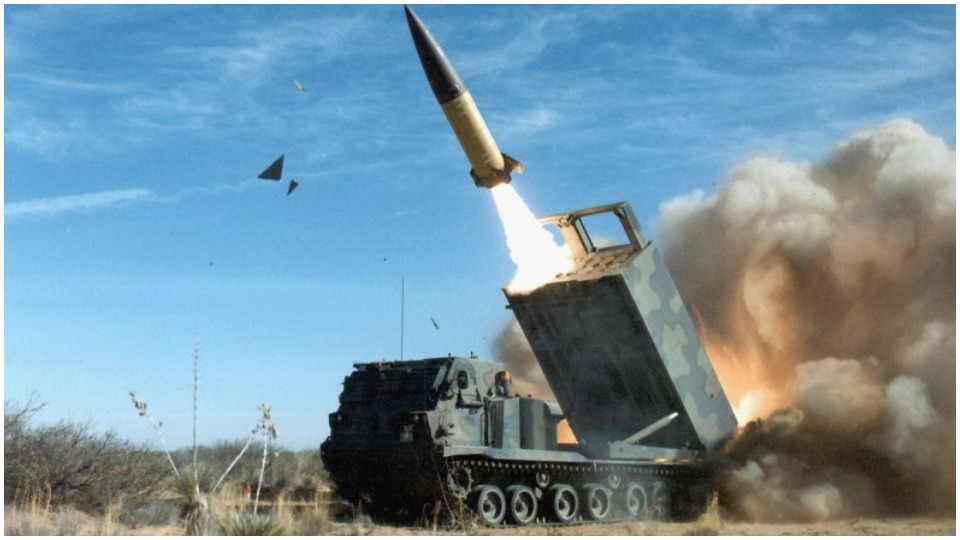
Secretary of State Mike Pompeo, who came to the Trump administration from the Tea Party wing of the Republicans, announced in February that the president intended to suspend U.S. participation in the Intermediate-Range Nuclear Forces Treaty and was beginning the process of total U.S. withdrawal in six months. The pullout from this Cold War-era missile agreement becomes official today.
To justify killing the three-decade-old agreement, Trump accused Russia of covertly developing and fielding a missile system prohibited by the treaty, but neither he nor Pompeo presented any evidence to back up the claim.
The canceling of the INF treaty is particularly worrisome because, since it was signed by President Ronald Reagan and Soviet Communist Party General Secretary Mikhail Gorbachev in December 1987, the Soviet Union, and now Russia and the United States have not been allowed to possess any land-based cruise missiles that can strike within a range of 310 to 3,410 miles. The deal was made to prevent such missiles from being deployed in Europe.
There were no such Soviet missiles in Europe at the time of the treaty signing, and there have been no such Russian missiles in Europe since then. (At the time of the treaty signing, the old Soviet Union, unlike the U.S., did not deploy nuclear weapons outside of its own territory. The U.S., however, stationed such missiles in other countries, including in what was then West Germany.)
The only outside weapons of any type today in European countries, including the former socialist countries, are NATO weapons, among which are tanks and planes from the U.S. In violation of agreements made at the end of the Cold War, NATO has moved weapons into all the countries from which the Soviet Union withdrew its forces, including Poland, the Czech Republic, and Hungary. U.S. weapons have even been deployed in places like Lithuania, Latvia, and Estonia, countries that were actually part of the Soviet Union itself.
Showing once again that NATO is fully controlled by the United States, the organization said in a statement made almost immediately after the Trump announcement killing the treaty, that “the allies fully support this action.”
The dangerous scuttling of the treaty begs the obvious question: Is Washington laying the groundwork for its own deployment of such nuclear ground-based missiles either in Europe or someplace else in the near future? Or is it planning development of other weapons that would violate the treaty, either in Europe or elsewhere?
The media has largely fallen for the line that there are people in the Pentagon who are “reasonable” and upon whom we can rely for protection against the excesses of President Trump. The scuttling of this historic treaty is just another piece of evidence that nothing can be further from the truth. Trump continues the long-held U.S. policy of feeding its war machine and thereby keeping the generals happy. He allocated them, with the agreement of Congress, the largest military budget in history. It includes money to modernize and upgrade the nuclear arsenal.
Unfortunately, the long drumbeat about how dangerous Russia is because of its interference in the 2016 elections has contributed to making it more difficult to build opposition to things like ending a nuclear arms deal with that country. The line pushed by some of the militarists is that Russia is the main threat to America, so possibly it’s not so bad that we re-start the arms race. It’s necessary for our security, they say, and with the continuing “Russiagate” scandal around the last elections many, including Democrats, have fallen into that trap.
Trump’s announcement that he was pulling out of Syria, for example, was portrayed by many liberals as some type of present for his pal Vladimir Putin. First of all, other than propaganda points, Russia has nothing much to gain from the U.S. pulling out of Syria. It has its own long-standing problems with ISIS and extremist right-wing fundamentalist Islamists and can use all the help it can get fighting them. Second, and perhaps more important, Trump never really intended to get out of Syria anyway, as he has shown since the announcement.
Likewise, despite his railing against NATO, including his threats to pull out unless other countries “pay up,” he has shown with his moves to kill the INF treaty that NATO policy is Trump policy when it comes to carrying out imperialist aims around the world.
U.S. and NATO warmakers find some willing partners in Germany
We have only to look at Venezuela where Trump has stepped up the long-standing U.S. attacks on that country with his national security adviser John Bolton laying it bare when he said this week how nice it would be to have U.S. oil companies managing the flow of oil out of that country.
Following right behind him in full support of overthrowing the elected government in Venezuela was the rest of NATO. All of Trump’s complaints against it aside, NATO is the willing accomplice to U.S. foreign policy. If the U.S. militarists ever got rid of NATO, they’d have to replace it with something similar or even worse.
When it comes to carrying out imperialist foreign policy, including killing a treaty that has prevented nuclear war, the shots are called in Washington, not in Belgium or anywhere else in Europe.










